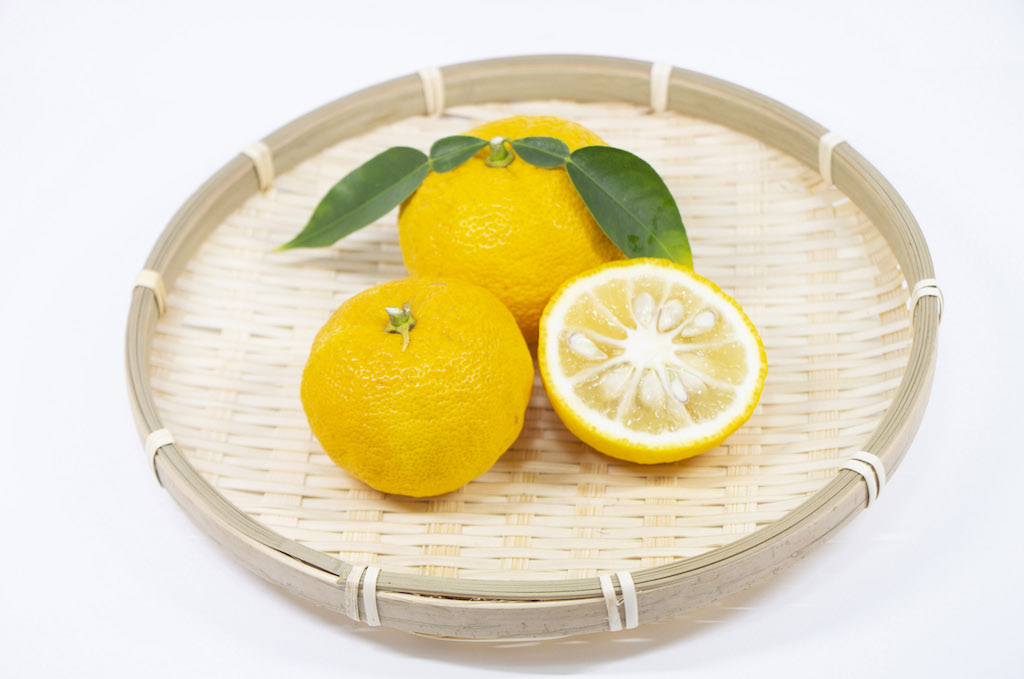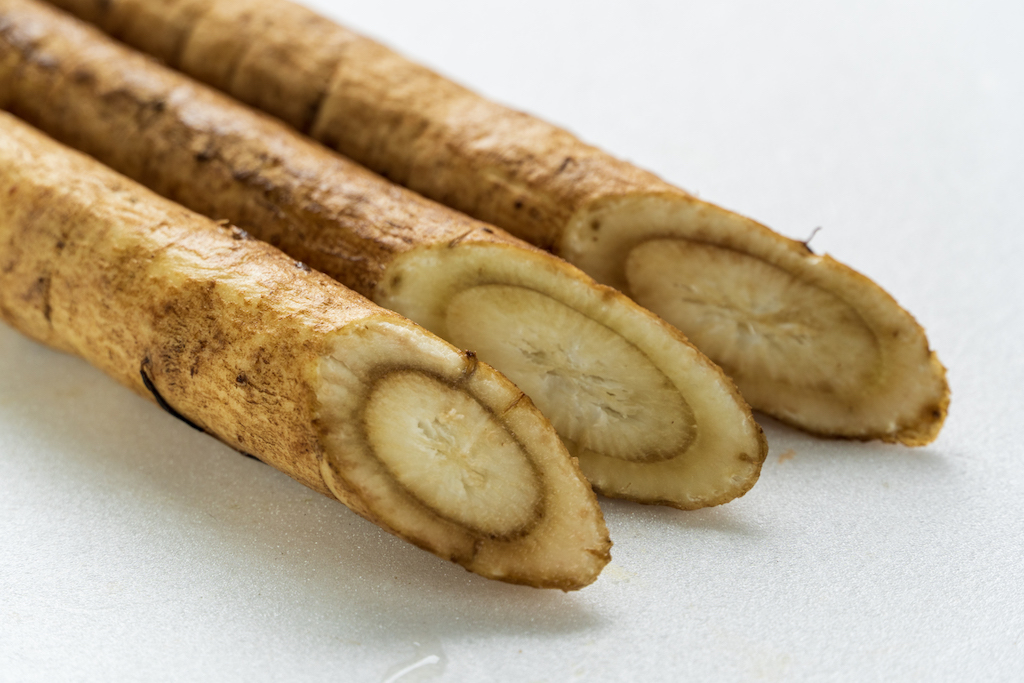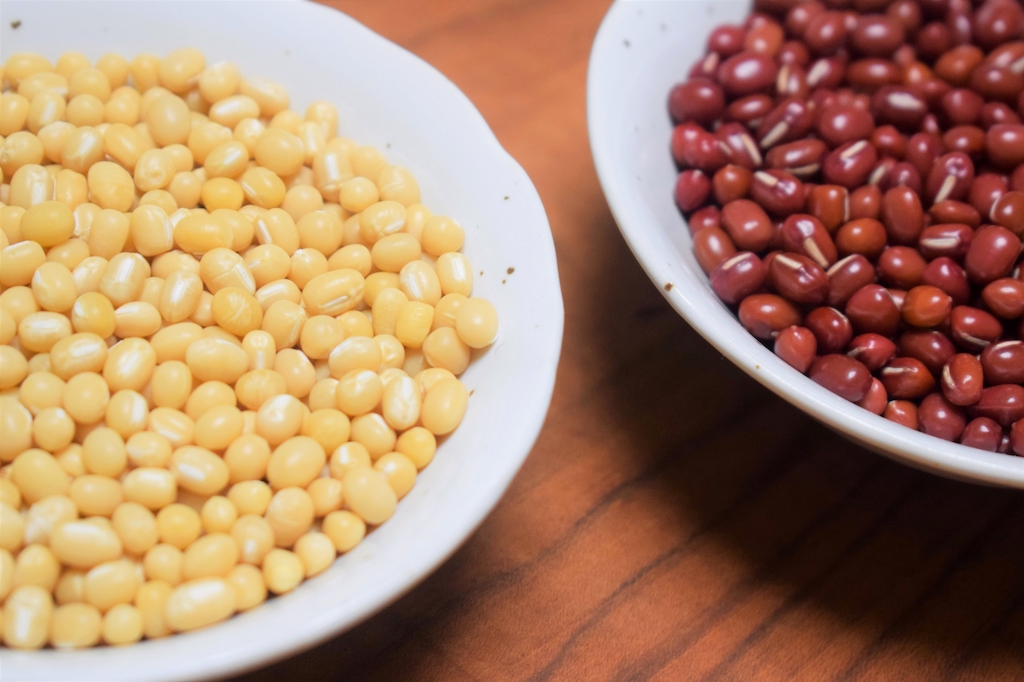What Is Yuzu (柚子)?
Yuzu is a type of the citrus, and also called “Hon-yuzu”. Although it is cultivated in parts of Korea and China, Japan has the largest amount of consumption and production.
Speaking of yuzu, it’s generally about ripe yellow yuzu. But unripe green yuzu is also shipped in Japan. Green yuzu has green pericarp with low sugar and high acidity, and it is often used as a condiment called yuzu kosho.
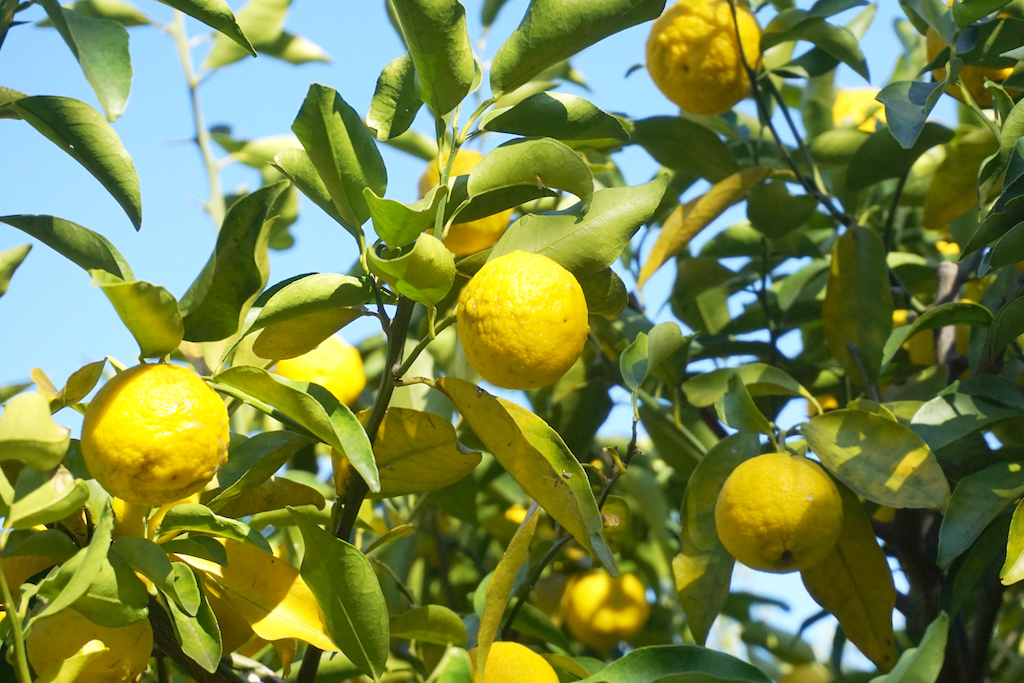
China is the original home of yuzu, and it’s said that yuzu was introduced from ancient China to Japan in Nara period. Since then it has been cultivated in many places in Japan.
Due to the strongest resistance to cold in the citrus genus, yuzu is also cultivated in the Tohoku region (northernmost six prefectures of Honshu) which is very unusual for citrus.
A mature yuzu is in season during winter, from November to December. On the other hand, green yuzu is harvested and shipped during summer.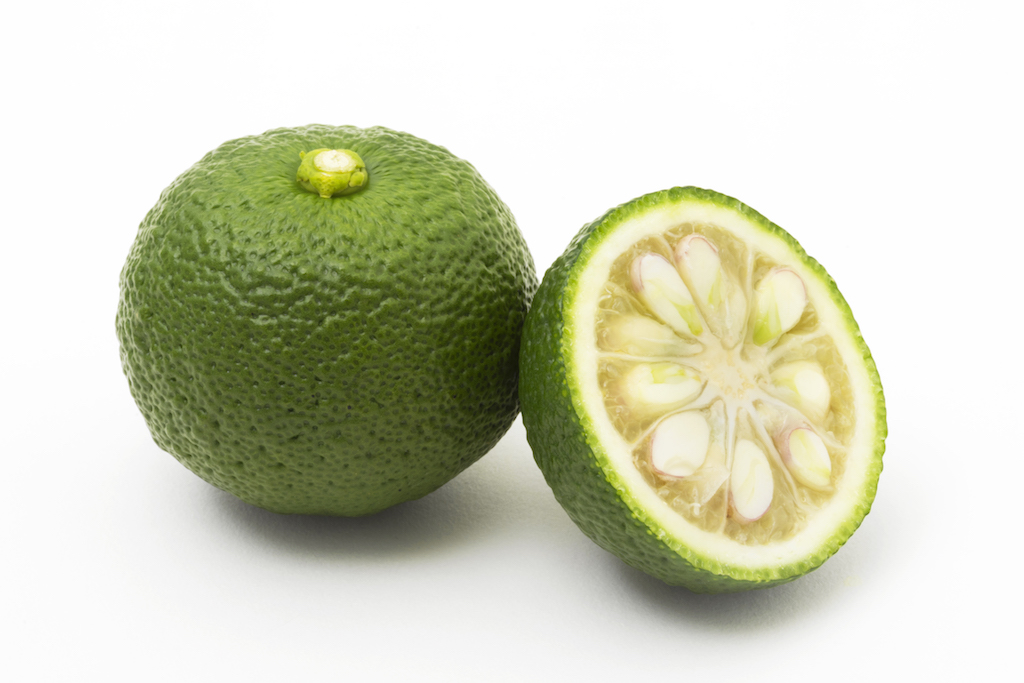 ▲Green Yuzu
▲Green Yuzu
What Does Yuzu Taste Like?
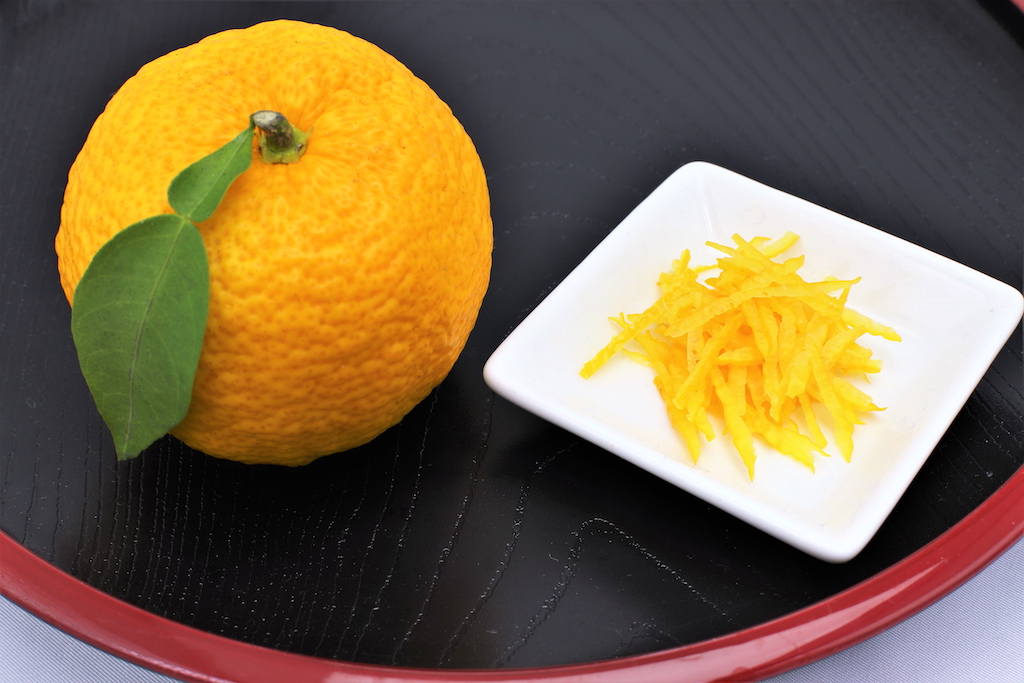
Yuzu has very unique scent that is totally different from other citrus fruits such as lemon, lime, sudachi, and kabosu.
The taste is extremely sour, so it’s not suitable for raw eating. Instead of eating yuzu pulp, usually its juice and skin are used for various purposes.
What Is Sudachi and How Is It Used?
How Is Yuzu Used?
Even mature yuzu has exceedingly sour taste, so usually it’s not eaten as it is. But yuzu juice and thinly sliced skin are used as condiment and seasoning. It works amazingly by adding flavor and sourness to the dishes.
Used as Condiment / Seasoning
Yuzu Kosho (Yuzu Pepper)
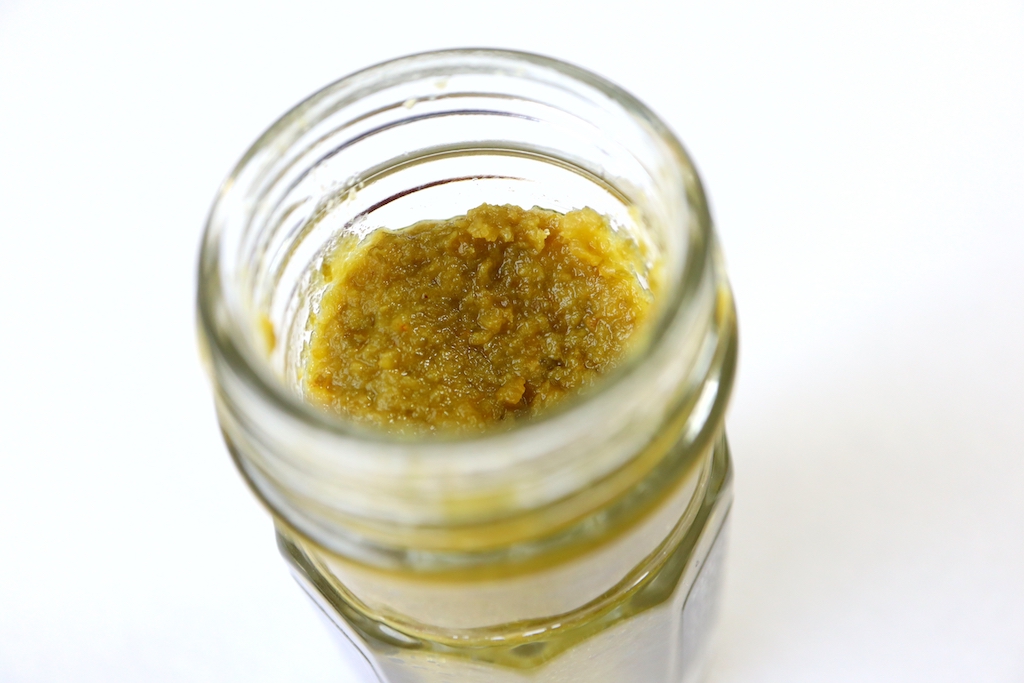
Yuzu kosho is made by maturing the mixture of rough-cut chili peppers, the skin of yuzu, and salt. It’s normally made from unripe green yuzu and green chilies, but yellow yuzu and red chili peppers are also used in some cases.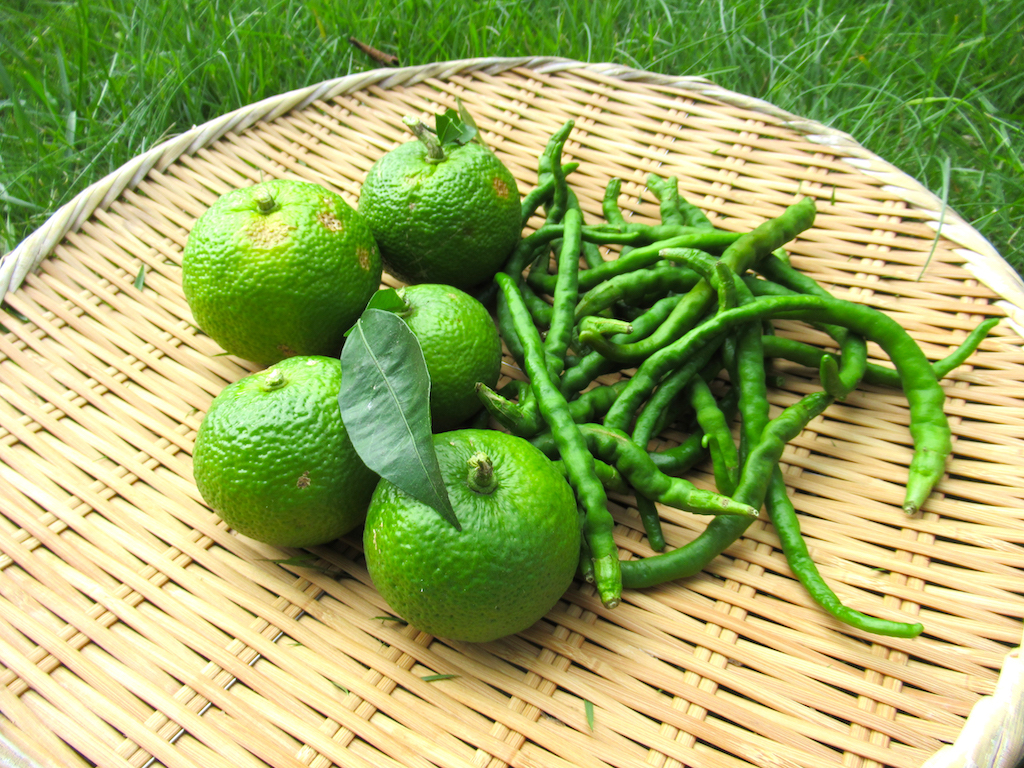
Yuzu kosho is used as condiment for various types of food such as sashimi (sliced raw fish), tempura, meat dishes, and cold tofu. It can be kind of like substitute for wasabi although it’s not as pungent as wasabi but has great smell of citrus.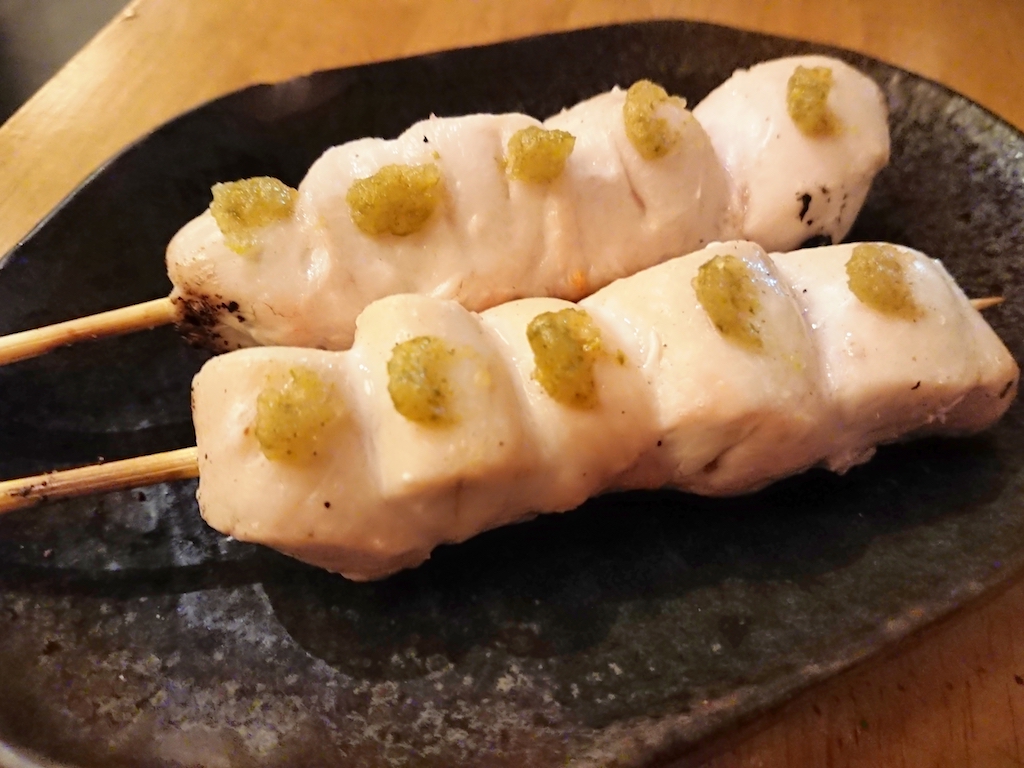 ▲Yakitori (Grilled Chicken Skewers) with Yuzu Kosho
▲Yakitori (Grilled Chicken Skewers) with Yuzu Kosho
By the way, “kosho” is old name for “chili pepper” in Kyushu region where is said to be the birthplace of yuzu kosho, although “kosho” generally means “black/white pepper” in Japanese.
Yuzu Ponzu
Ponzu is traditional Japanese seasoning made by mixing soy sauce, salt, citrus juice, and vinegar. Generally the citrus used for ponzu is bitter orange, but there are some ponzu using yuzu instead of that.
Yuzu Miso
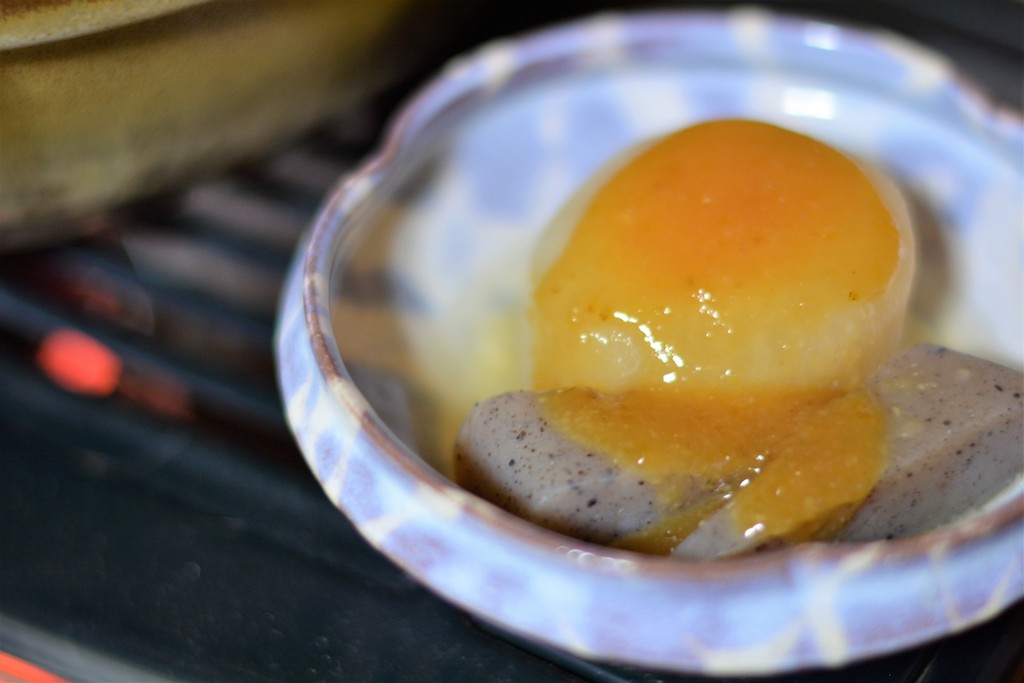 ▲Oden with Yuzu Miso
▲Oden with Yuzu Miso
Yuzu miso is made by mixing miso, yuzu juice, grated skin of yuzu, sugar, and mirin. It’s all-purpose sauce: you can put the sauce on all kinds of food such as salad and onigiri (rice ball). And you can use it as pizza sauce too.
Yuzu Shichimi (Seven Flavor Chili Pepper with Yuzu)
Shichimi Togarashi is a mixture of red cayenne pepper and other aromatic spices. It normally doesn’t contain yuzu, but there is yuzu shichimi which contains dried skin of yuzu. It adds excellent refreshing scent to the spiciness.
Used To Improve the Flavor of Dishes
Simmered Daikon Dressed with Sweet Miso (Furo-fuki Daikon) and Yuzu

Miso and yuzu, they are perfect match. Even though you don’t make “yuzu miso”, there is easier way to enjoy yuzu flavor: putting thinly sliced skin of yuzu on top of dishes. Furo-fuki daikon is daikon simmered with broth and topped with sweet miso sauce.
Sweetened Pickled Daikon with Yuzu
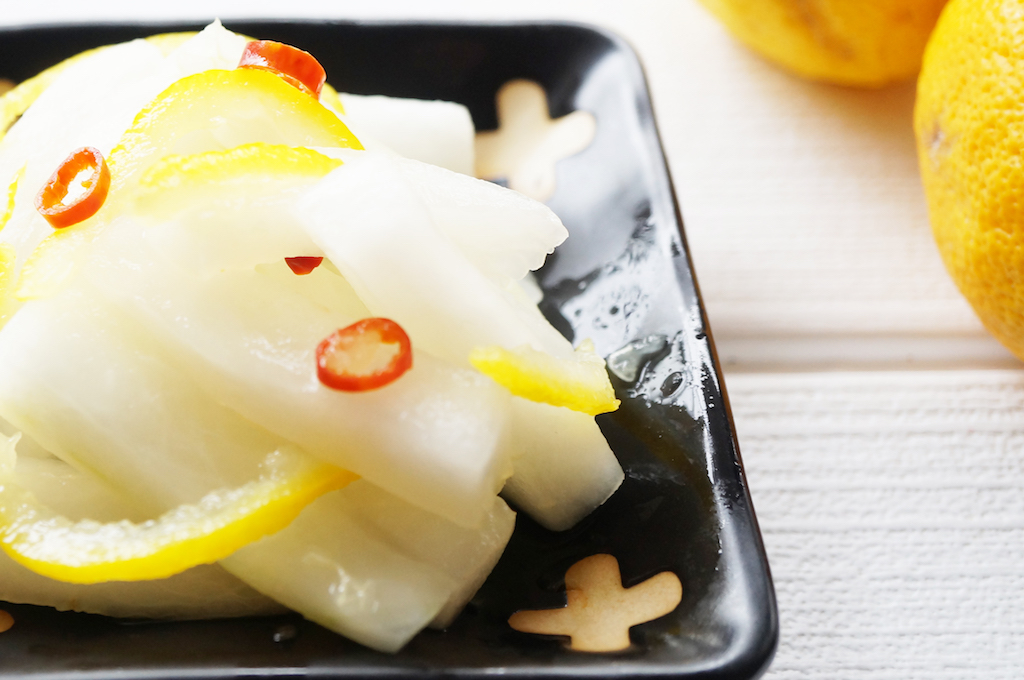
Slices of daikon pickled in sweetened vinegar. By adding a little bit of thinly sliced skin of yuzu, its flavor will be improved dramatically.
Used for Sweets Cooking
The juice and skin of yuzu can be used to flavor sweets too. One of the most popular one is making jam from yuzu. You can eat in on crackers or whatever you like, and also make yuzu tea by mixing 2-3 teaspoons of yuzu jam with hot water.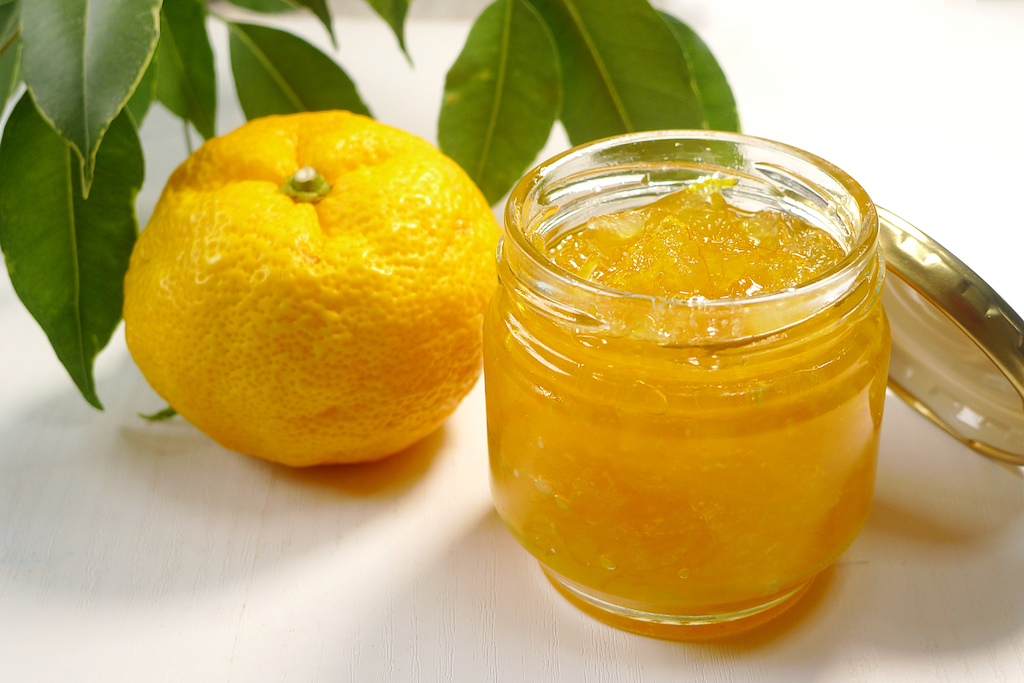 ▲Yuzu Jam
▲Yuzu Jam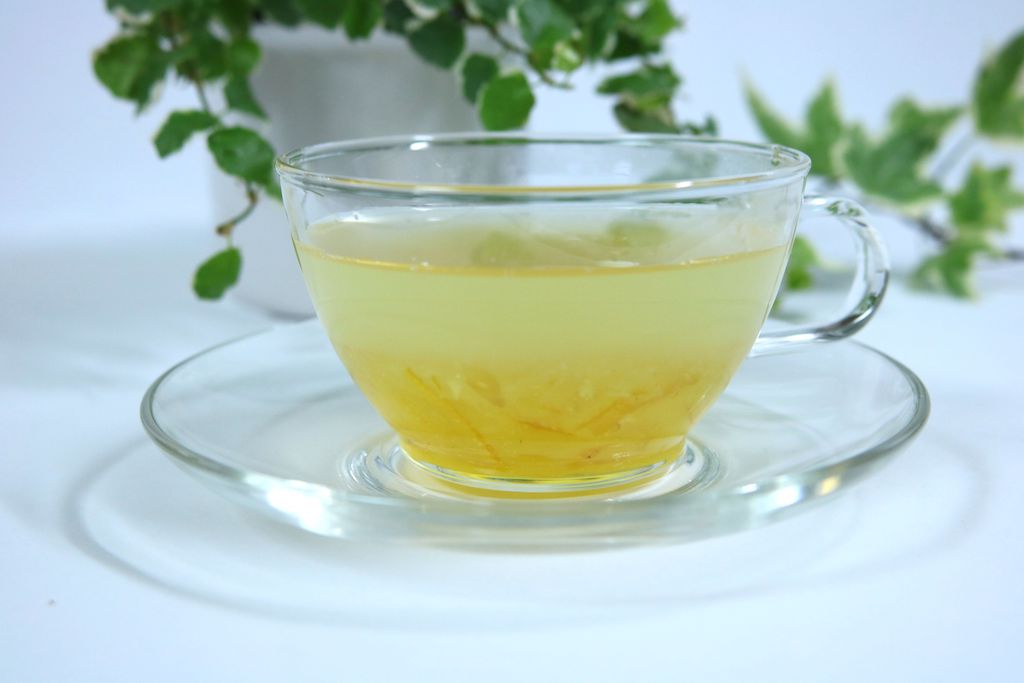 ▲Yuzu Tea
▲Yuzu Tea
Not only for jam, but yuzu is also used as ingredient and topping for fruit juice, ice cream, jelly, and cake. Just like the candied orange peel, you can make candied yuzu peel too.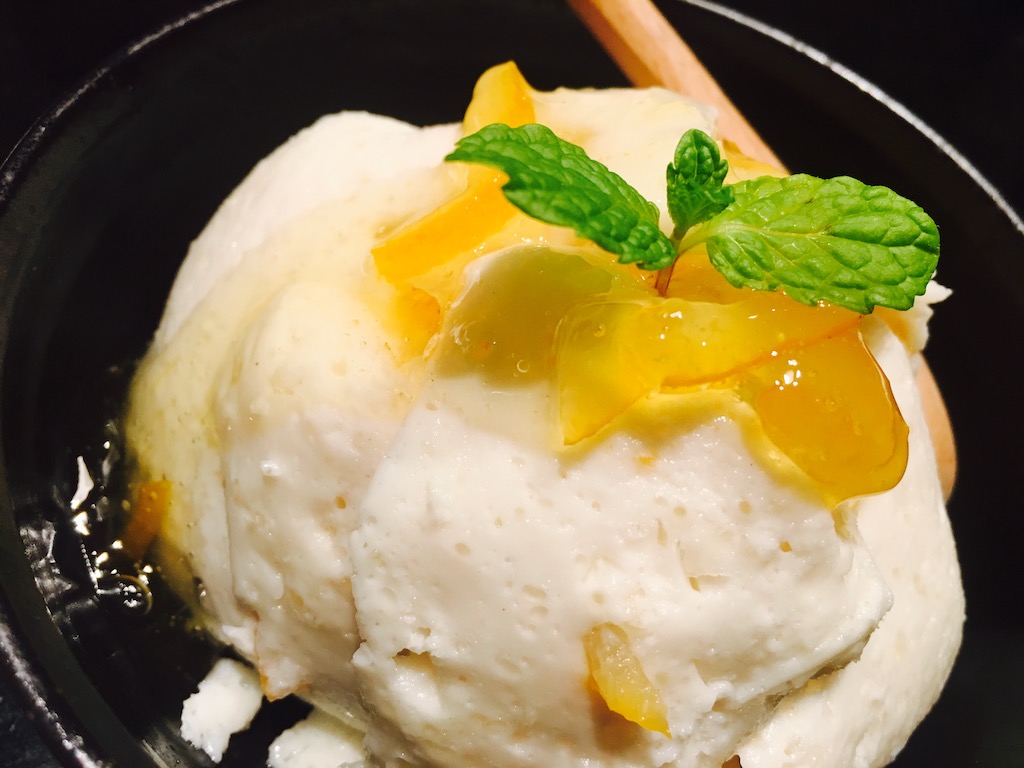 ▲Bavarian Cream with Yuzu
▲Bavarian Cream with Yuzu
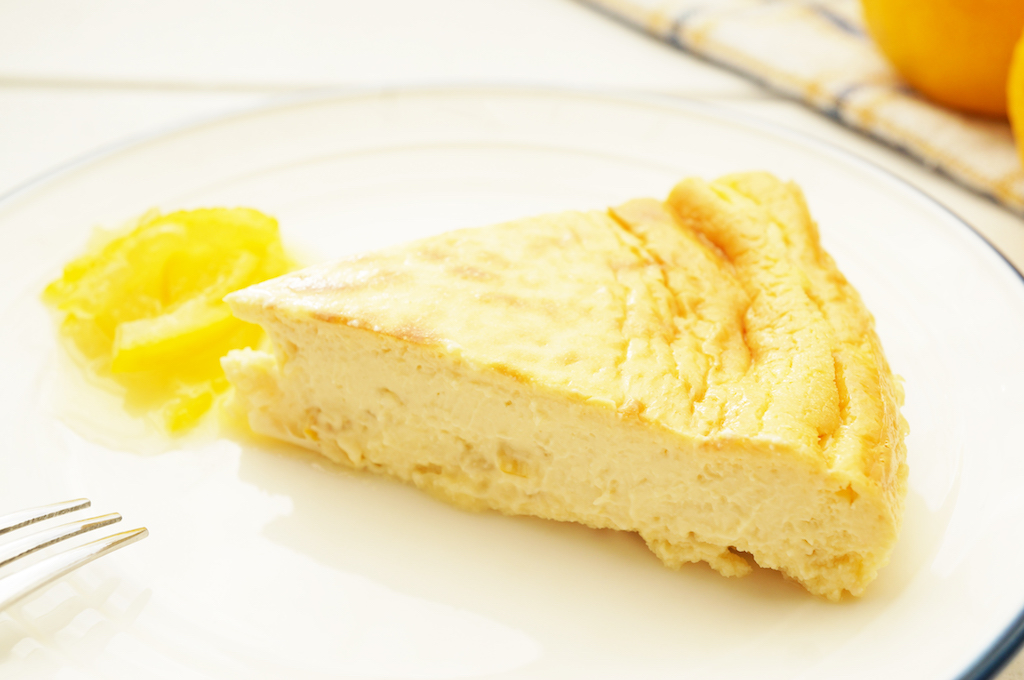 ▲Yuzu Cheesecake
▲Yuzu Cheesecake
Others
Yuzu Cup (Yugama)
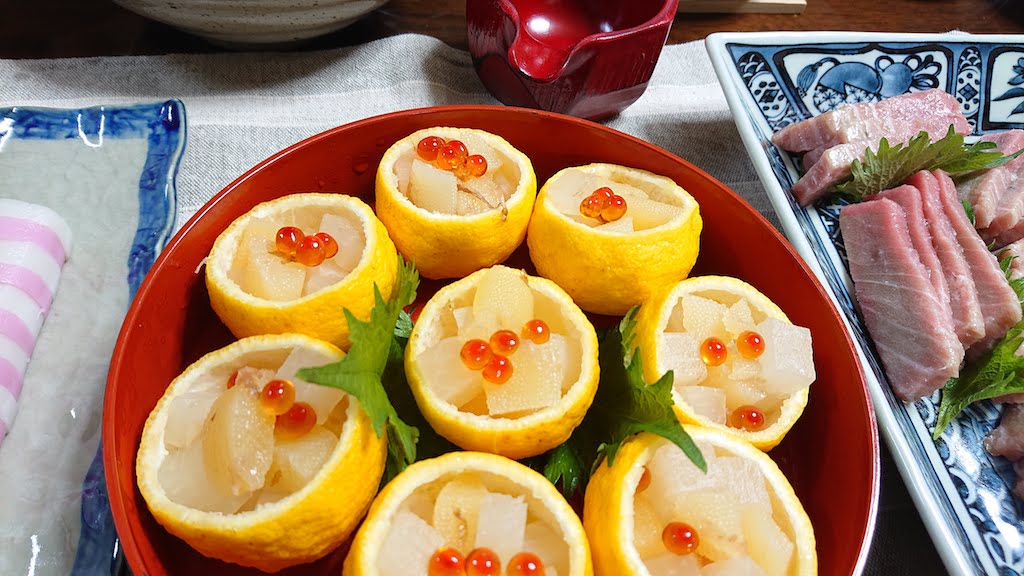
The cup made by scooping out the inside of yuzu is called “Yugama”, and some dish is supposed to be dished up on the yuzu cup. For example, Japanese sour salad called “namasu” dished up on yuzu cup can be the part of osechi, a traditional New Year’s dish in Japan.
The juice took from the cup is usually used for making the dish inside cup.
Hot Yuzu Bath (Yuzu-Yu)
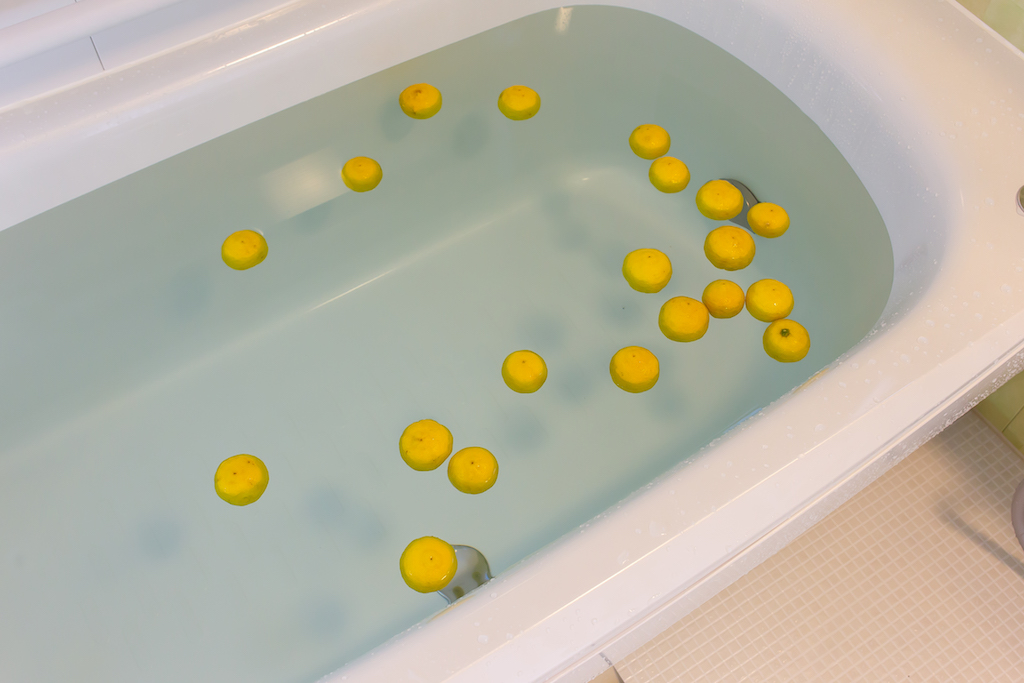
Legend has it that “taking a bath with yuzu in the winter solstice helps you not to take cold all year round”. To prepare yuzu-yu, you need to set 2-3 (or more) yuzu afloat in a bath.
Although no medicinal properties have been specified, a lot of people have done that in the winter season praying for good health.
Nutrition and Benefits of Yuzu

Minerals such as calcium and potassium that are contained in juice and skin of Yuzu abundantly could strengthen bones and promote the discharge of salt accumulated in the body.
Additionally, it is said that vitamin C contained yuzu plentifully could strengthen the immune system, and you could expect anti-oxidant action from it.
Related Species of Yuzu
There are 2 types of citrus fruits that are very similar to yuzu. It’s interesting that the appearance of those 2 types resemble yuzu and has “yuzu” in its name, but actually they are different species from real yuzu.
Hana-Yuzu (花柚子)
This is also called “Issai-yuzu (一才柚子)”, and “Toko-yu (常柚)”. The size is much smaller than real yuzu, and its weight is about 1.7 oz (50g). The weight of real yuzu is about 3.5 oz (100g) by the way.
The feature of it is that the skin of hana-yuzu is thinner than the real one, and the smell is lighter.
Oni-Yuzu (鬼柚子)

This is also called “Shishi-yuzu (獅子柚子)”. The size is very big which is about 8 inches (20cm) in diameter.
Although it has “yuzu” in its name, it’s categorized as the species related to pomelo.
Oni-yuzu has unique rugged shape, and maybe that is why the name has “oni” which means “devil” in Japanese. The skin is very thick, and it has kind of like thick white cotton between skin and pulp of oni-yuzu just like pomelo.
Oni-yuzu doesn’t have refreshing good smell like yuzu does. It has really light scent of citrus.

